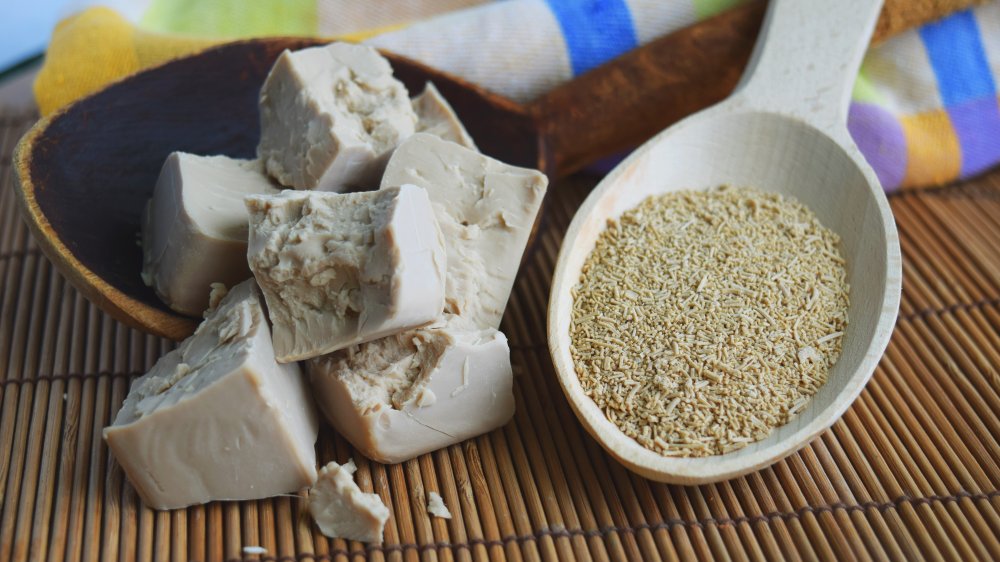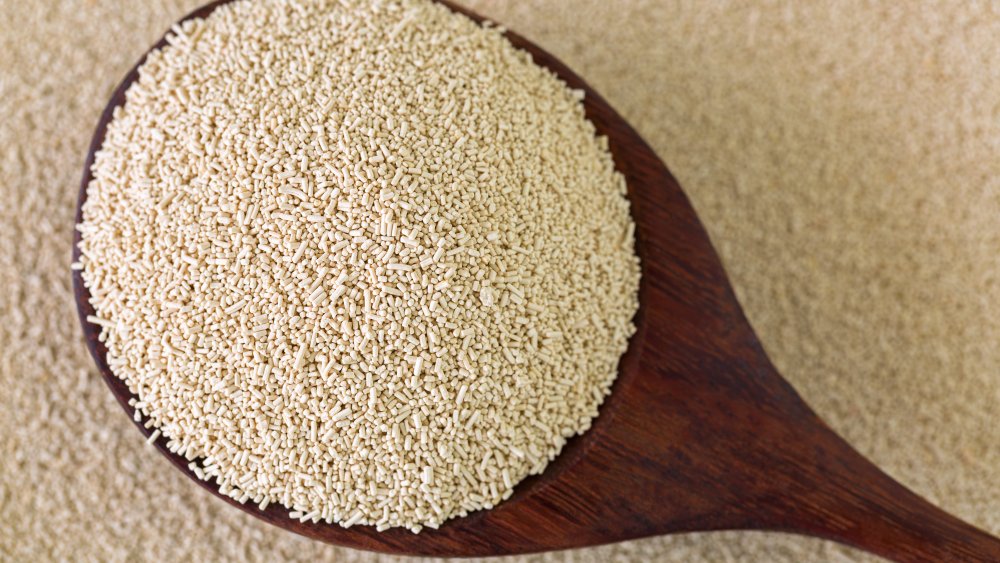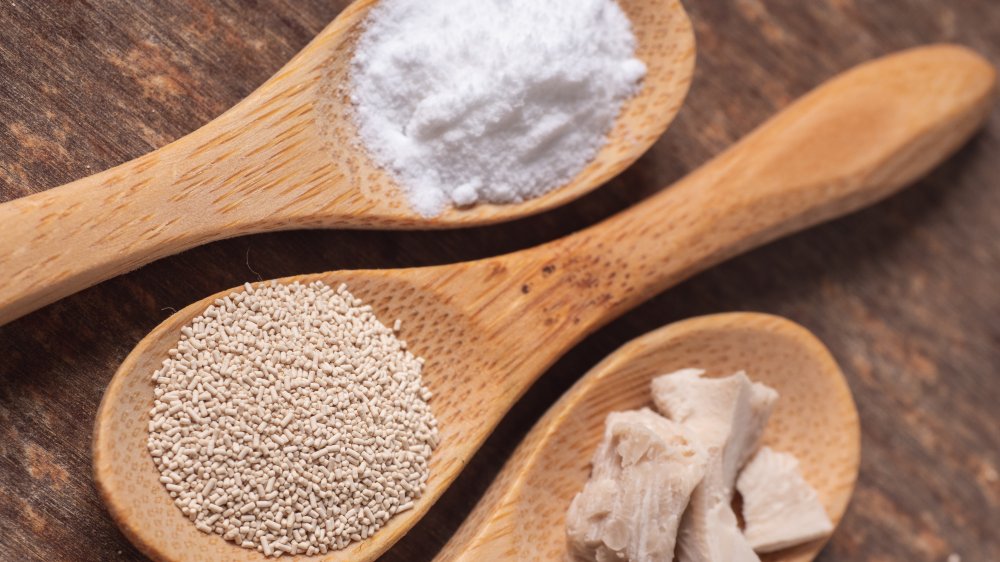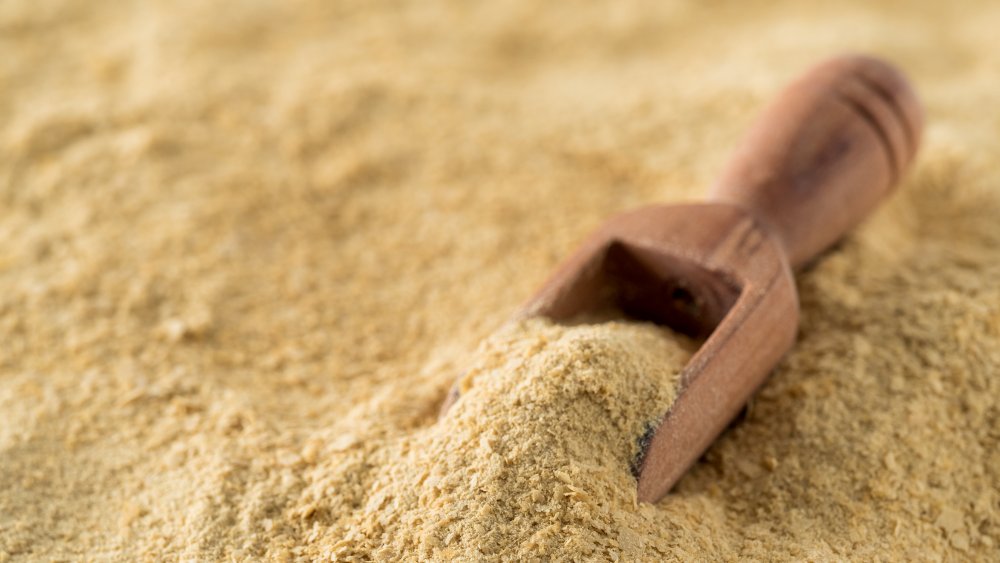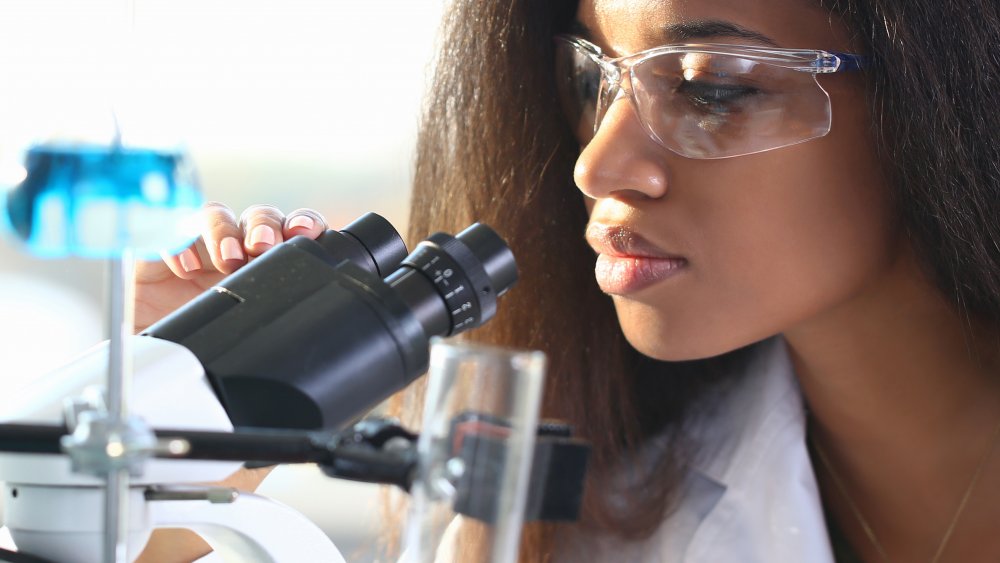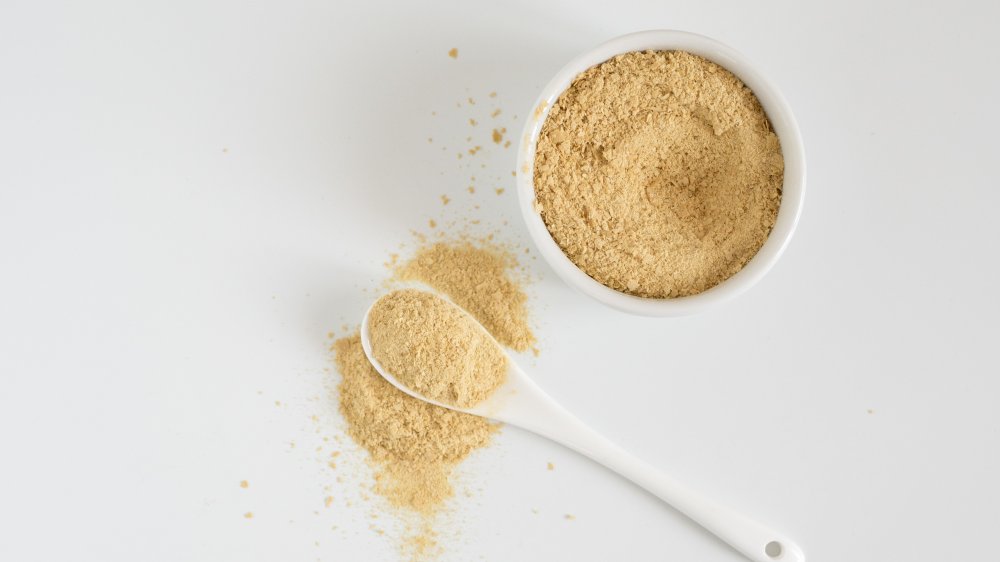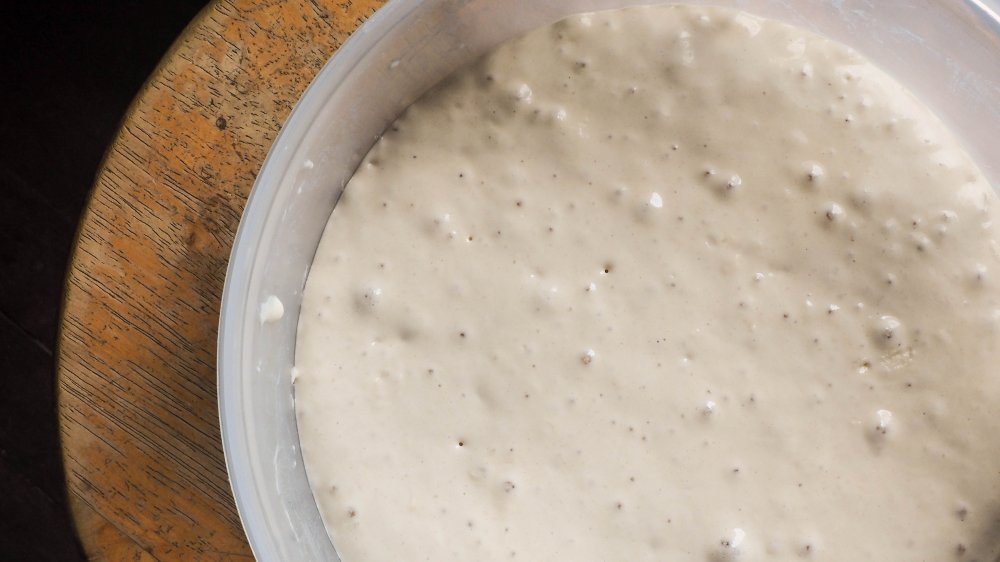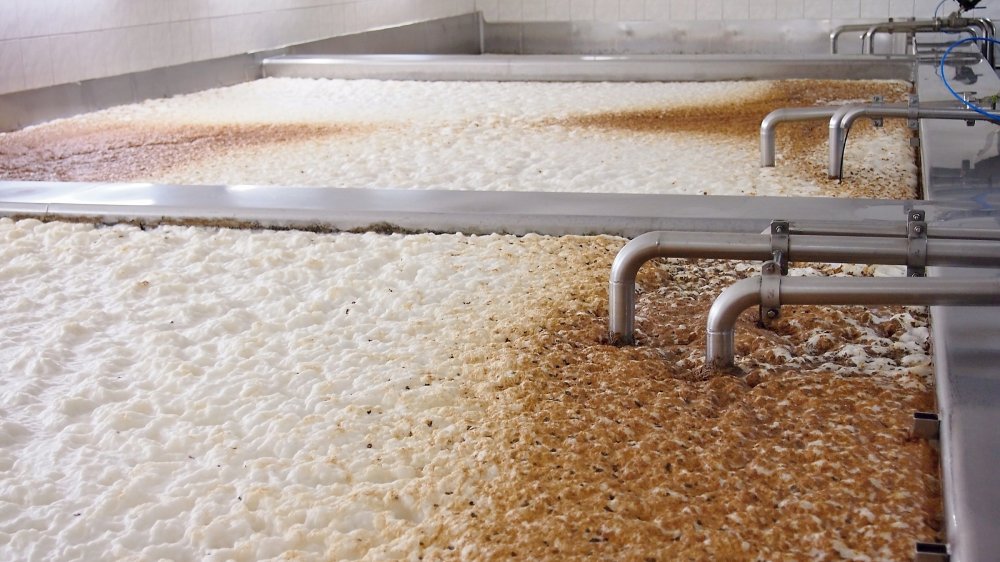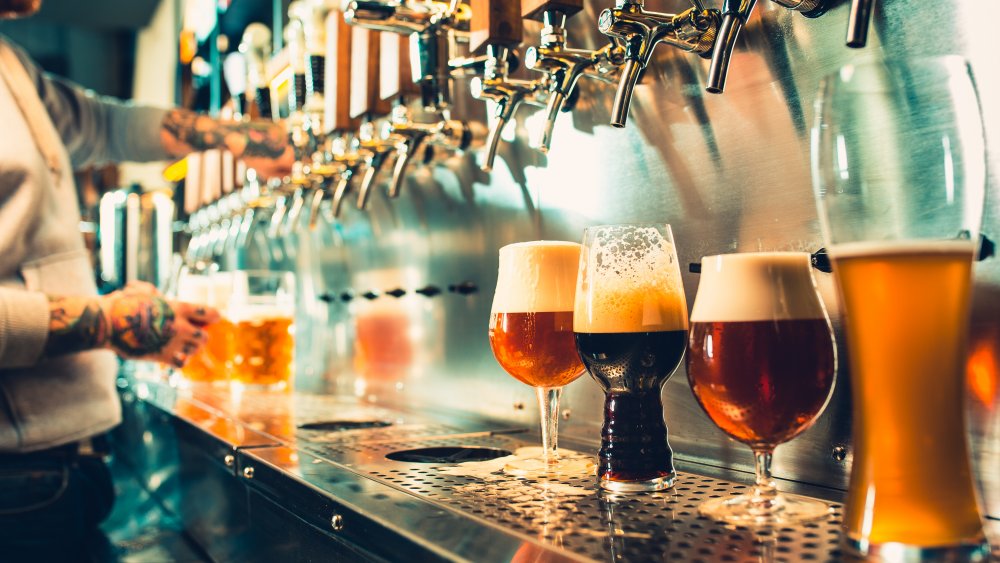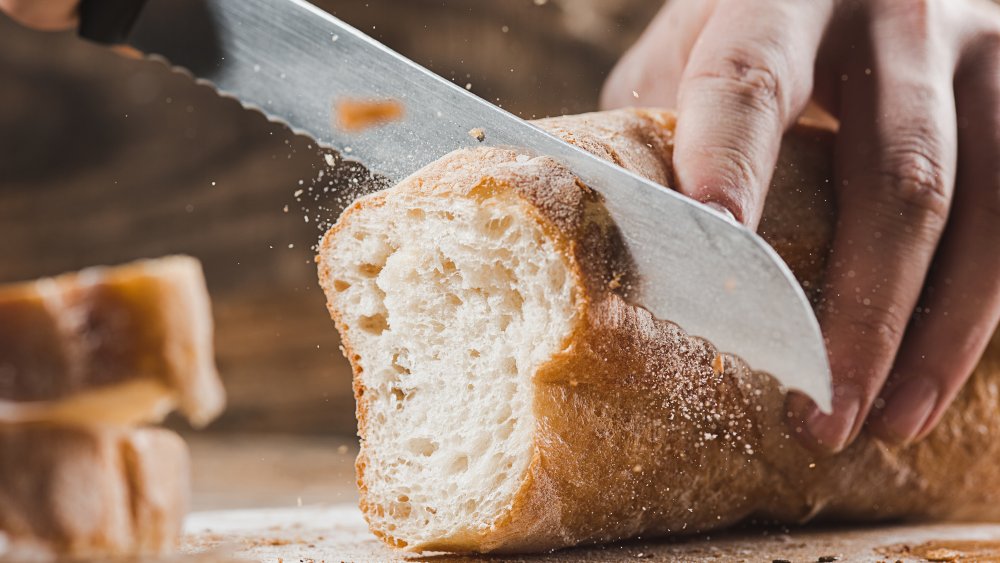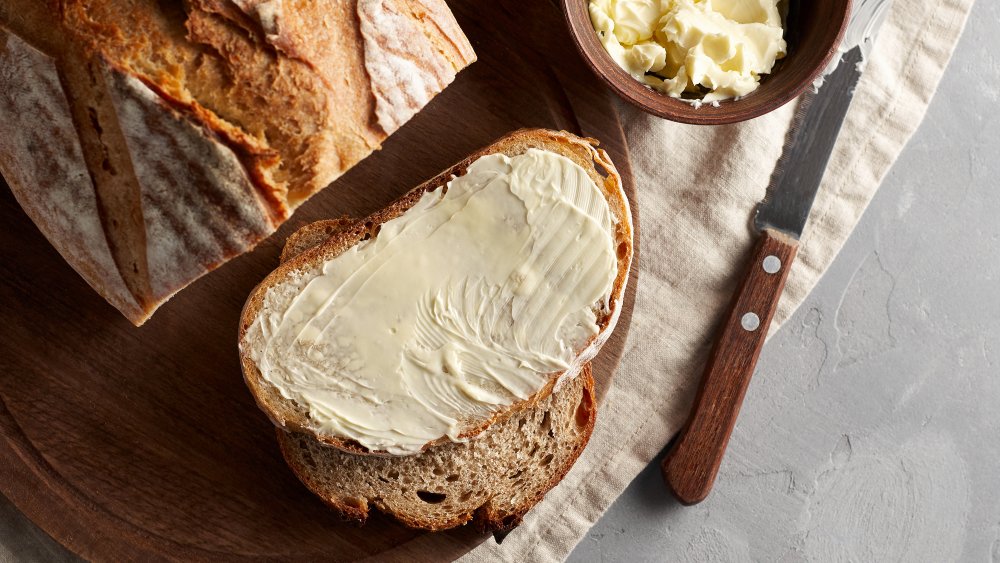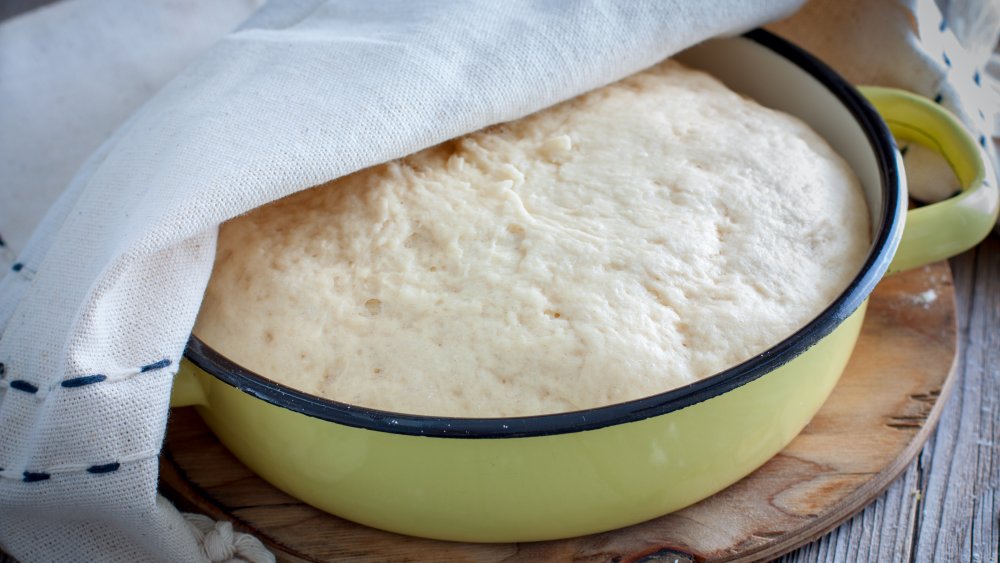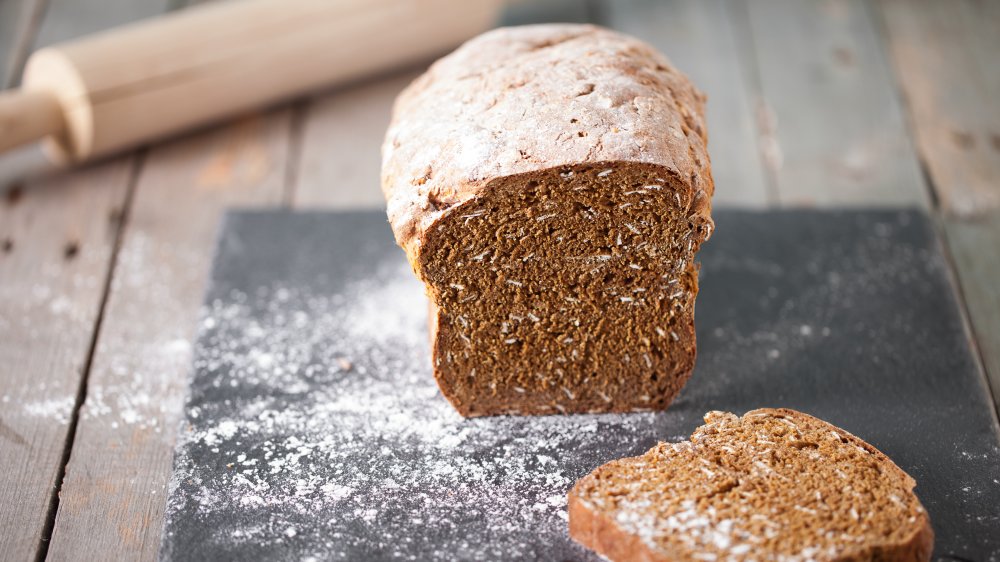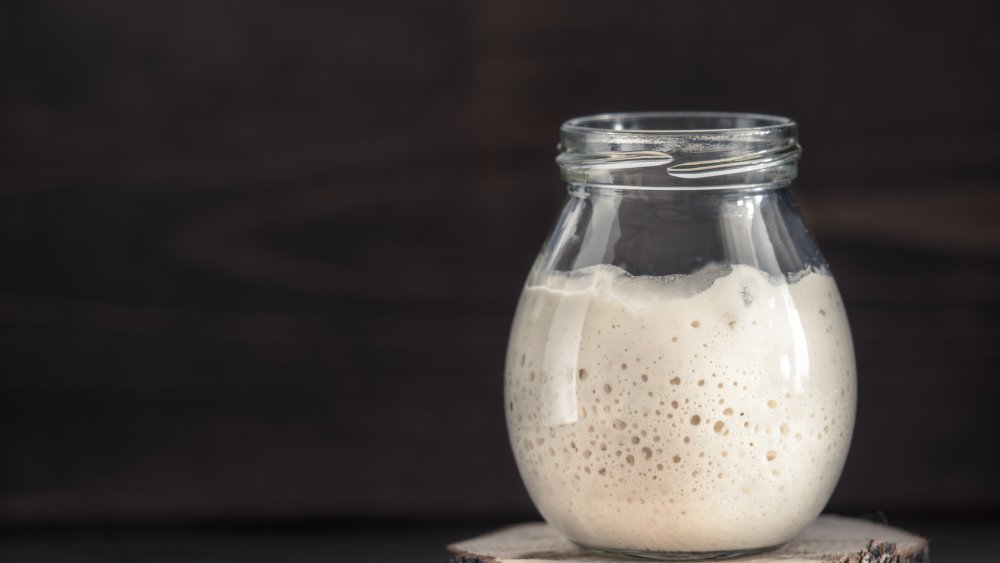The Untold Truth Of Yeast
Whether you're a baking aficionado, or you're just beginning to dabble in the baking department, chances are you've been introduced to yeast. Reading through a recipe, you've probably read that you need one packet, or 2 1/4 teaspoons of yeast, in order to make that recipe for a loaf of French bread or those cinnamon rolls you've been dying to try at home.
Yeast is a required ingredient for almost all bread recipes, as well as some delightful pastry options. After all, yeast is what gives your final baked good its beautiful, fluffy texture. And while we typically just buy yeast at the grocery store and toss it in our mixing bowl as the recipe requires without thinking twice about it, there is a fascinating story to this granular substance we use so often. What exactly is yeast? Where does yeast come from, and what else can it be used for? Well, we decided to take a closer look. This is the untold truth of yeast.
Yeast is a living fungi
When we think of yeast today, it's hard not to picture those little packets that come three to a strip, found in the baking aisle of the grocery store. Or, you may find yeast in a small jar on the shelf, or perhaps in bulk. But we certainly don't think of it for what it actually is: fungi.
Yes, yeast is a living organism found all around us, and that's why it's such a beautiful ingredient to harness and use in making things like bread, alcohol, and more. According to producer Red Star Yeast, which knows a thing or two about this organism, yeast are egg-shaped cells, and they are only visible through a microscope. They're fungi just like the molds found on blue cheese, mushrooms, or even in the antibiotics we utilize such as penicillin. However, yeast grows in a different form than other fungi. Traditionally, fungi are composed of tubular chains of cells called hyphae, but yeast is found in small clusters of cells, or as an individual cell.
Yeast has been around a really long time
Yeast certainly isn't something that was just dreamed up overnight to be manufactured so we could all bake copious amounts of bread. It did not originate in a lab, as many of the other ingredients that are incorporated into our favorite recipes. In fact, yeast has been around longer than, well, pretty much any of us.
In researching and recovering the ancient tomb of an Egyptian ruler, Scorpion, from 3100 B.C., archaeologists found 700 jars with resinated wine. According to Scientific American, the resin was harvested from a terebinth tree and was used to slow the wine's natural progression into vinegar. As the jars of wine found onsite were studied further, evidence of Saccharomyces Cerevisiae, AKA yeast, was found to be present.
And while there isn't solid evidence that the ancient Egyptians knew that the addition of this particular yeast strain may have played a role in turning their juice into alcohol, it certainly does show that yeast has been prevalent a very, very long time — more than 5,000 years to be exact.
There are hundreds of varieties of yeast
While our traditional baking yeast is certainly what we think of first when referring to yeast, as it turns out, there are hundreds of species in the same family. When baking bread or other goodies, we turn to one of the most common species, Saccharomyces Cerevisiae, but according to The Conversation, there are actually 250 species of yeast that do the same job as the variety we all know and love. Those 250 species have the power to break down sugars and convert those sugars into carbon dioxide and alcohol. And while there are plenty of yeast species that do the job, only 24 of those species of yeast interact with other ingredients and actually play a role in making food taste good.
These other species are found in a variety of food products as well, such as Lactobacillus Brevis, used for cheese and yogurt, or Brettanomyces Lambicus, which may be used in brewing beer to specifically produce a beer that's a bit sourer.
Yeast is commercially made under very specific conditions
Although yeast is found in different varieties literally all around us, we thankfully don't have to harness the power of it on our own. Luckily, manufacturers have figured out a way to take yeast that lives in our environment, grow it, and turn it into something that can be packaged, shipped, and purchased at your grocery store.
But yeast certainly doesn't make its way to us without a few steps in the process. According to Quartz, it all starts with a strain of yeast, which then gets fed sugars to continue growing. On a large manufacturing scale, yeast and molasses are mixed together and fed a ridiculous amount of sugar to keep it happy and growing. Once that sugar is consumed and fermented, the solid and liquid byproducts are separated, and the yeast goes through a process that dries it out. That dried, coarse powder is what we've become accustomed to purchasing in the store, and manufacturers package it in a way that makes it shelf-stable until you're ready to use it.
The yeast in your pantry or fridge can die
If you've ever gone to bake a loaf of bread or used yeast to whip up dough for pizza night, only to be left with a hard, flat end result, it's probably because your yeast was dead.
Just as other products have expiration dates to pay attention to, yeast certainly does too. According to Red Star Yeast, their yeast is stamped with a best by date of two years from when the yeast is packaged. And storing your yeast properly will ensure that it will live until that date. Red Star Yeast suggests that your yeast is tucked away in a cool, dry spot such as your pantry, but it can also live in your refrigerator or freezer. Overall, it needs a spot where it isn't finding any moisture or heat to ensure it doesn't get active while being stored for your next bread baking session. After all, yeast is a living organism.
To test whether your yeast is alive and well or totally dead before you dive into a baking project, you can sprinkle your package of yeast, or 2 ½ teaspoons, over warm water, paired with a teaspoon of sugar. According to The Spruce Eats, if it's alive, the yeast will begin to bubble in the mixture. If it doesn't wake up and bubble, chances are you won't want to continue using it for your dough, as it won't rise as effectively as fresh yeast would.
Some yeast varieties need to be activated
Because of the nature of the manufacturing process for yeast, some varieties need a little waking up. After all, those little living organisms are literally dried up and packaged so they can make their way to our kitchens. But as you dive a bit deeper into yeast, you'll realize there are two types when it comes to baking: active dry yeast and instant dry yeast.
Instant dry yeast is not as common, but it certainly is found on store shelves. Introduced in the 1970s, instant yeast is ready to rock straight out of the package. It's designed to dissolve into the ingredients you're using for your bread or pastry dough, without any need for activation, and it makes your dough rise faster.
On the other hand, active dry yeast requires a bit more coaching. Packaged in its dormant form, active dry yeasts need to be activated, or quite literally woken up from its sleepy state in its package. Active dry yeast needs to be sprinkled into warm water in order for it to activate, before adding in any other ingredients in your baking project.
Yeast is used in alcoholic beverages too
Yeast certainly has its long-time reputation for baking bread, but that's not the only thing it's good for. Just as yeast consumes the sugars and starches in flour to create carbon dioxide, it also creates alcohol along the way.
When brewing beer, yeast is added to the wort, or the mash that's made from malted grains such as barley. This combination of ingredients begins the process of fermentation, as the yeast begins to consume the sugar, or glucose in the wort and converts it into ethyl alcohol and carbon dioxide, ultimately leaving us with the alcohol content found in beer, as well as its carbonation.
But it doesn't just stop with bread and beer. Yeast plays a role in making wine as well. Because yeast is all around us, it's also found on the skins of grapes, which makes its way into the fermenter during the winemaking process. Wild yeast strains consume the sugars in the juice from the grapes, ultimately creating alcohol. And while this process would happen on its own anyway, winemakers choose to add commercial strains of yeast as well to speed up the process, and each strain adds a different flavor to the finished wine.
Yeast might prevent your next hangover
As noted, yeast isn't just for baking loaves of bread and impressive pastries. And while different strains are employed in alcoholic beverages, yeast may actually help to prevent the dreaded hangover that comes from those beverages as well.
Hangovers come on because of the dehydrating effects of alcohol, along with congeners, which are chemicals that can cause a hangover to be more intense. And while there is no immediate cure for a hangover when you wake up in the morning with that dreaded headache and queasy feeling, consuming yeast the night before may help ease your pain.
According to Jim Koch, co-founder of Samuel Adams beer, dry active yeast will do the trick. Koch told NPR that mixing a bit of dry yeast with yogurt before a night of drinking is the ideal way to alleviate your headache the next day. Koch said that because yeast breaks down alcohol, the alcohol in what you're consuming may be broken down before being absorbed into your bloodstream. It may not be backed by science, but it might be worth a try.
2020 prompted a yeast shortage
With all of the things that surfaced in 2020, coronavirus in particular, it's certainly been a wild ride. And never did anyone imagine consumers would be experiencing a yeast shortage on top of everything else. As stay-at-home orders began to surface across the U.S. in March, people were buying groceries by the cart-full, stocking up on essentials like meat, bread, and a wild amount of toilet paper. Similar to a winter storm, people were trying to prepare their families for what might happen.
Psychotherapist Lisa Brateman told How Stuff Works that "we spend a lot of time and energy trying to feel in control, and buying things you might throw out still gives the person a sense of control in an uncontrollable situation." And as news was developing about the Coronavirus, people were engaging in those same tactics, but this time it threw staples like flour and yeast into the mix as well. More time at home means more time for baking, right?
According to USA Today, within a four-week period, leading up to April 11, 2020, the sales of yeast jumped by 410 percent. And according to John Heilman, Vice President of manufacturing for AB Mauri, which oversees Fleischmann's Yeast, the buffer inventory the company had available on store shelves, providing two to three weeks in between when they restock, was bought up almost instantly, creating a continuous lull in the product.
The amount of yeast added to bread makes a difference
Pulling off a great loaf of homemade bread can be a challenging task. After all, you have to get your ingredients just right, along with your mixing, and even your rise times. Truly, there's a lot of science that goes into baking the perfect loaf.
As you're looking at how much flour should be added, or how much sugar and salt, one of the most important ingredients to get exactly right is yeast.
First thing's first, if you add too much yeast to your dough, it may end up producing more volume than intended. A dough can increase in size too much, which ultimately leaves holes in the end product after baking. At the same time, if there's excess yeast, creating too much of a rise, your loaf has the potential to completely collapse in the oven. On the other hand, if you don't include enough yeast, you may end up with bread that's a bit too heavy with a tough texture because there wasn't enough development of carbon dioxide.
Yeast is why bread smells so good
There's a classic smell that comes with freshly baked bread. It can bring back feelings of nostalgia from your grandmother or mother baking bread in the kitchen, or you might even just be thinking of that scent that wafts through the grocery store when the freshly baked French bread is put out for the evening.
But that smell isn't just coming from the baking process itself. It has everything to do with yeast. As the yeast in the dough is feeding on the sugars found in flour, carbon dioxide is being released to make that dough rise. But it's also creating those incredible aromas we love along the way.
During the fermentation process, a number of compounds are produced, and we can thank these compounds for the delicious smell and flavor of bread. The more time a dough spends fermenting, along with the higher amount of yeast used in the dough, ultimately the higher the concentration of aromatic compounds and the better the smell.
You can still make bread without yeast
It is true, most bread recipes call for yeast. However, if you find yourself in a pinch, and you're out of yeast at home (or you can't find it anywhere in a grocery store), there yeast substitutes and ways of skipping yeast altogether.
First thing's first, consider a loaf of Irish Soda Bread. Irish Soda Bread is typically served with thicker slices, as it's a bit more crumbly than your typical loaf. That texture comes from the omission of yeast, and a typical Irish Soda Bread recipe will employ baking soda as its leavening agent.
If you're still set on a recipe that calls for yeast, you can opt for a substitute that mimics what yeast will do. You can substitute an equal amount of double-acting baking powder for yeast, as the baking powder acts to make the dough rise, as the yeast typically would. Or, you can use baking soda, paired with an acid such as lemon juice or buttermilk to mimic the same reaction, ultimately releasing carbon dioxide in your dough.
Sourdough starter is basically a DIY form of yeast
While there are certainly several companies that have the manufacturing and distribution of yeast, quite literally, down to a science, there are ways to utilize a more natural form of yeast. In fact, you can produce it yourself! This may come in handy for those who can't find yeast on their grocery store shelves, or it serves as a unique science project to see if you can actually master it on your own.
A sourdough starter, which is ultimately used for baking sourdough bread, is essentially a form of yeast that you grow on your own at home. Because yeast is all around us, it really just needs a nice spot for it to form a community and to grow, and you can provide that perfect environment. According to Discover Magazine, creating a home for bacteria consisting of flour and water essentially creates an enticing dish for the yeast in the environment to eat, leaving it congregating and growing in one vessel such as a jar. As it grows, your sourdough starter becomes ready to use in bread baking projects.
